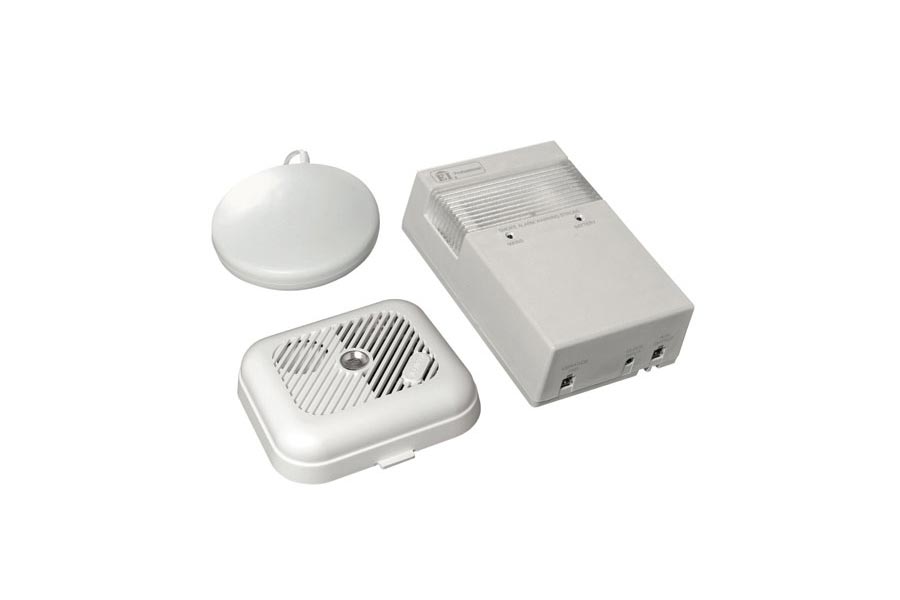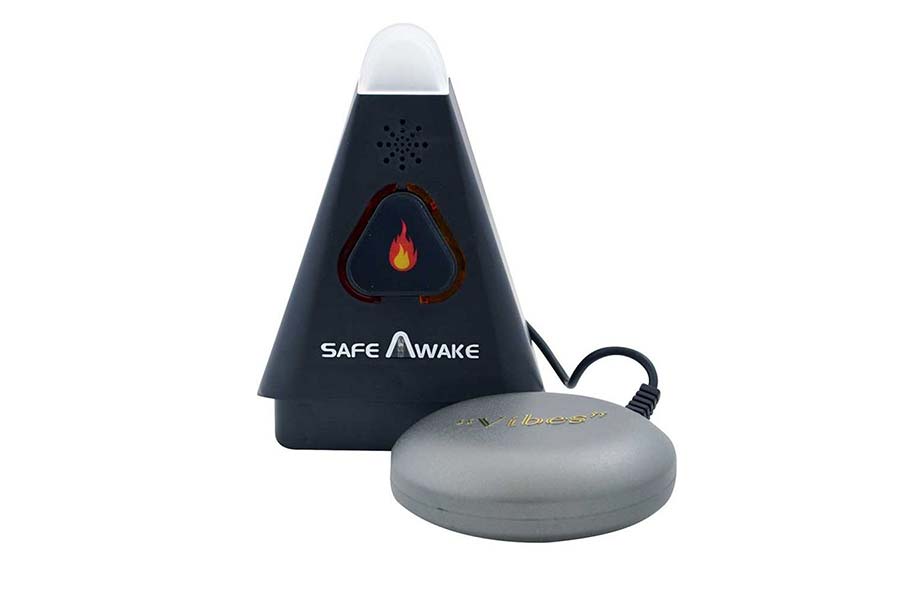So you have been diagnosed with hearing loss, don't worry, believe me, it isn't the end of the world. Put your big boy or girl pants on and get yourself a set of hearing aids. Okay, I know it isn't as easy as that and I do understand that there is a wider feeling of personal loss. You will work through it though. When you do, you need to decide what you need to make your life better. Because that is what communication does, make life better, or at least more interesting. Anyway, beyond communication, you have other needs that you need to think about. Smoke alarms, and indeed other alarms are part of that. Did you know that research has shown that nearly 50% of people with hearing loss may not be awoken by a typical smoke alarm? Yes, I didn't either until I started to research. Let's talk home safety.

The Wrong Frequency
The underlying issue is that smoke detectors are set to emit an alarm at a frequency and intensity that people with hearing loss may have trouble hearing. The frequency is between 3 and 4 Khz, which funnily enough is where a lot of people with hearing loss have problems hearing. The research found that most average smoke detectors did not wake up to 44% of people with a mild to moderately severe sensorineural hearing loss during the crucial first 30 seconds. That 30 seconds benchmark basically increases survivability. The quicker you wake up, the earlier in the fire process you are, the better chance you have for escape and survival.
The following timeline has been issued by the National Fire Protection Agency (NFPA) in the US to demonstrate how fast an average fire spreads and to quantify how much time individuals have to escape a residential fire alive
- 0 - 30 seconds: fire begins in home and starts to grow
- 1 min & 04 sec: at just over 1 minute, flames spread and smoke starts to fill room of origination; smoke detector is triggered
- 1 min & 35 sec: about 30 second later, temperature of room exceeds 190°F; at this point, there is still time to escape the house safely
- 2 min & 30 sec: temperature of room exceeds 400°F
- 2 min & 48 sec: handful of seconds later, smoke quickly pours into other areas of house, increasing chances of asphyxiation or suffocation
- 3 min & 03 sec: temperature in room of origin is over 500°F
- 3 min & 20 sec: safe escape is categorized as very difficult
- 3 min & 41 sec: flashover occurs whereby energy in the room suddenly spikes and ignites everything, resulting in room temperatures of 1400°F
- 4 min & 33 sec: flames visible from exterior of home and safe escape is categorized as very unlikely
As you can see, you have about 3 minutes after the start of a fire to be out of the house with a reasonable certainty of survival. Considering that it may take over a minute for the fire alarm to trigger, it means that you have two minutes to wake up, wonder just what the hell is going on, understand there is an emergency and finally get you and your family to safety. That's a lot to do in 120 seconds. That is why the 30 second wake up figure is so important.
The Right Equipment Will Save Lives
There are many smoke alarm systems available for people who are hard of hearing. They either use a different frequency for the alarm sound, or they work with other devices such as a strobe light or bed shaker. For instance, the Ei175 Smoke Alarm System for the Deaf & Hearing Impaired from Safelincs in Ireland which is pidtured above. Or, the SafeAwake smoke alarm system from Oaktree in the US which is pictured below. Both of these systems work a little differently, but they both are designed to make sure you wake up if a smoke alarm is triggered.

Ei175 Smoke Alarm System For Deaf and Hearing Impaired
This system is a system that needs to be wired into your electricity supply. While that is a little harder to achieve, it means that you can be sure it works no matter what. The system can be connected to several smoke detectors so you can cover every important zone in your house. The control panel is installed in the bedroom of the person with hearing loss in a place that allows the strobe to be visible and the bed shaker to be put under a matress or pillow. They recommend that you try the mattress to test if the shaker is strong enough. If not, or if there is any doubt, put it under the pillow of the person with hearing loss. The combined system will ensure that people with hearing loss have the best opportunity to wake up, get up and escape in a dangerous fire situation.
The Safeawake Smoke Alarm System
The Safeawake is actually a really cool idea, it is made up of the bedside alarm and the bed shaker. You plug it into a wall socket, put the bedside alarm beside your bed and the shaker under your pillow. It scans constantly for the sound of any fire alarm. When it hears it, it automatically emits an alarm at 520 Hz which is a pretty good frequency for most people with hearing loss and it sets of the shaker. Again, the system will ensure that people with hearing loss have the best opportunity to wake up, get up and escape in a dangerous fire situation. What I really like about the Safeawake is that it is portable, so if you go away on holiday, you can stick it in your suitcase. I mean how cool is that?
While I have covered smoke alarms here because I think they are hugely important, there are other use cases you might need to consider like a door bell ringer, or a phone ringer. Both of those devices serve a purpose for people with hearing loss who aren't wearing hearing aids for whatever reason. I mean few of us wear hearing aids at night in bed, so how can we be sure that we will know if there is an urgent caller at the door or indeed an overnight phone call.
The frightening statistic for me while I was doing the research for this article was that nearly 50% of people with hearing loss would not be woken up by a standard smoke alarm within the 30 second window. That means that there is a greater chance of those people not surviving a house fire. That is a pretty grim statistic, don't be one of them, if you have hearing loss, consider your home safety needs. Like us on Facebook by clicking the button below to keep up with our latest utterances. Alternatively, if you don't like the book of face, sign up to the newsletter below. Oh and remember, a hearing aid isn't properly fitted unless they do Real Ear Measurement.










